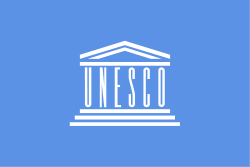Red Book of Endangered Languages

The Red Book of Endangered Languages was published by UNESCO and collected a comprehensive list of the world's endangered languages. It has been replaced by the UNESCO Atlas of the World's Languages in Danger.
History
In 1992 the International Congress of Linguists (CIPL) meeting in Quebec discussed the topic of endangered languages, as a result of which it formed the Endangered Languages Committee. It held an international meeting also in 1992 in Paris to place the topic before the world and initiate action. The meeting was considered important enough to come under the authority of UNESCO.
At the instigation of Stephen Wurm the committee resolved to create a research center, the International Clearing House for Endangered Languages (ICHEL) and to publish the UNESCO Red Book of Endangered Languages based on the data it collected. Shigeru Tsuchida was to start the research center. It began in 1994 at the University of Tokyo with Tasaka Tsunoda as its director.
Meanwhile the initial reports on endangered languages had already been collected and submitted to UNESCO by regional experts in 1993. These were now turned over to ICHEL, which created a website for the red book. It continues to be updated regularly.[1]
Last updates
In February 2009, UNESCO launched an online edition[2] of the Atlas of endangered languages which covers the whole world, contains much more information than previous printed editions and offers the possibility to users to provide online feedback, in view of its constant updating.
References
- ↑ Brenzinger, Matthias (2007). Language diversity endangered. Berlin, New York: Mouton de Gruyter. pp. 206–207. ISBN 3110170493, ISBN 978-3-11-017049-8.
- ↑ "Atlas of the World's Languages in Danger". new edition of the Atlas of endangered languages. UNESCO. 2012. Retrieved 30 April 2012.
External links
- "UNESCO Interactive Atlas of the World's Languages in Danger" (in English, French, and Spanish). UNESCO. 2011. Retrieved 26 June 2011.